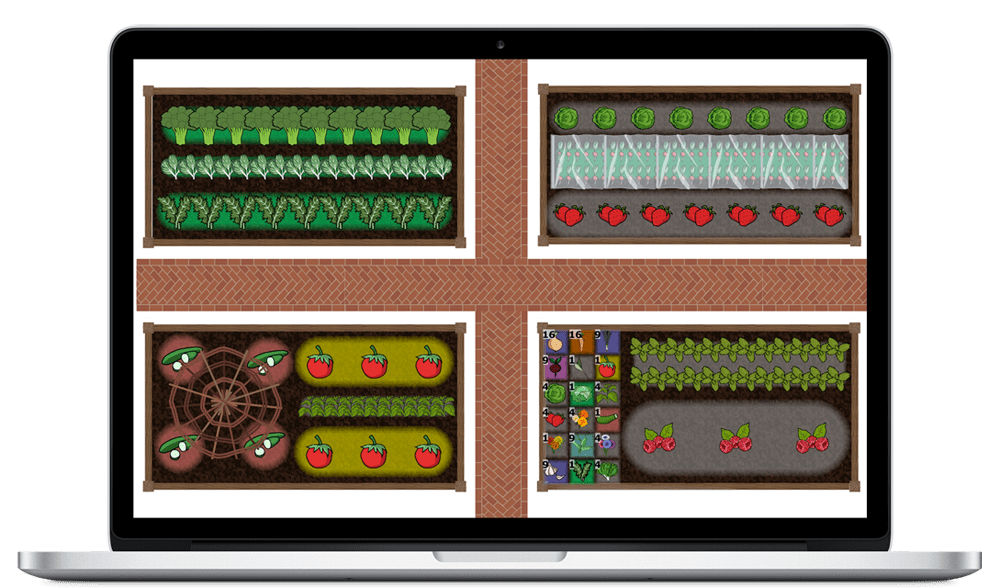
Learn How to Grow More Food in Less Space!
ADVERTISEMENT
will a raised garden keep ground hogs from digging under and into my garden? was thinking of putting in a solid bottom (untreated plywood?), and putting some kind of cover over the garden to keep critters out. I gave up last year, they ate almost everything! And then I have to find good dirt that hasnt been contaminated so garden still organic. thanks!! Linda
Linda, i have been using raided beds for years and also have a ground hog issue. I put either metal or plastic fencing on the bottom of the bed to keep them from burrowing under my veggies.
I use 4x4 raised garden beds and I always have beautiful squash and zucchini plants and they will begin to grow and suddenly shrivel up and rot. And that's even if I get 1 or 2 at all. My cucumbers turn into balls instead of long cucumbers. What am I doing wrong? I live in 27253.
What a disappointment! It sounds like blossom end rot, resulting from uneven moisture. See here for more information: https://www.almanac.com/plant/squash-and-zucchini This is often a result of improper pH levels. Get an inexpensive kit (more here https://www.almanac.com/blog/gardening/garden-journal/soil-testing-better-garden ) or contact your local cooperative extension about having a more thorough test; find you coop service here: https://www.almanac.com/search/site/cooperative%20extension
And there’s this: are you rotating the plants in the beds, not planting the same thing in the same soil every year? Change the place you plant every year. Here’s some advice on that: https://www.almanac.com/video/how-rotate-your-vegetable-crops
And it might not be a bad idea to mix in some fresh compost every spring. We hope this helps and the zukes are beautiful this year.
We built two 3 ft. X 12 ft. raised beds. The boards are 12 inches high. Is that deep enough for most vegetables? I'm assuming we will be filling the containers to at least 10 inches to leave a 2 inch space for watering and mulching at the top. Is there anything that cannot be grown in that space that needs more root room?
Twelve inches is ideal, but that doesn’t mean you will not have success with a LOT of vegetables. Did you break up and loosen the soil under? Remember plant roots will take advantage of that, too! Even if you have not you, you can do that if you haven’t yet filled the bed with soil. Here’s our general advice, which addresses these and other aspects: https://www.almanac.com/content/how-build-raised-garden-bed
We hope you harvest a heap!
I planted multiple varieties of "thornless" raspberries in a raised bed filled with commercial and home made well-composted soil. The first year my plants which were well established in pots prior to the raised bed produced a carpet of young plants for the next year and some berries. The next year very few new plants and little production. This year I planted two new plants from small pots but these were eaten by something almost over night. I have a 2-ft rabbit fence but something else is wiping out my new growth near the ground level. Any ideas?
We have no easy answer but a couple of ideas. It might be rabbits; you do not say what the fence is made of, and they can squeeze through very small places. The apparent almost-overnight disappearance is especially puzzling but we’ll take a stab at this: Is your soil too rich? That is, could the pH be off? is it holding water (is it too tick/rich/heavy to drain well) and drowning the roots? Compost is good but maybe, just maybe the mixture lacks essential nutrients. You could do a soil test. Cooperative extensions perform the most thorough tests; find the service nearest you here: https://www.almanac.com/content/raised-bed-gardens-and-small-plots#comment-85906
When you contact the service, ask them if they have any other ideas, based on your location.
We hope this helps!
I am planting my garden for the second year and I am curious if it makes a difference as to which direction I layout my rows i.e. is North to South better or would East to West better for sunlight?










